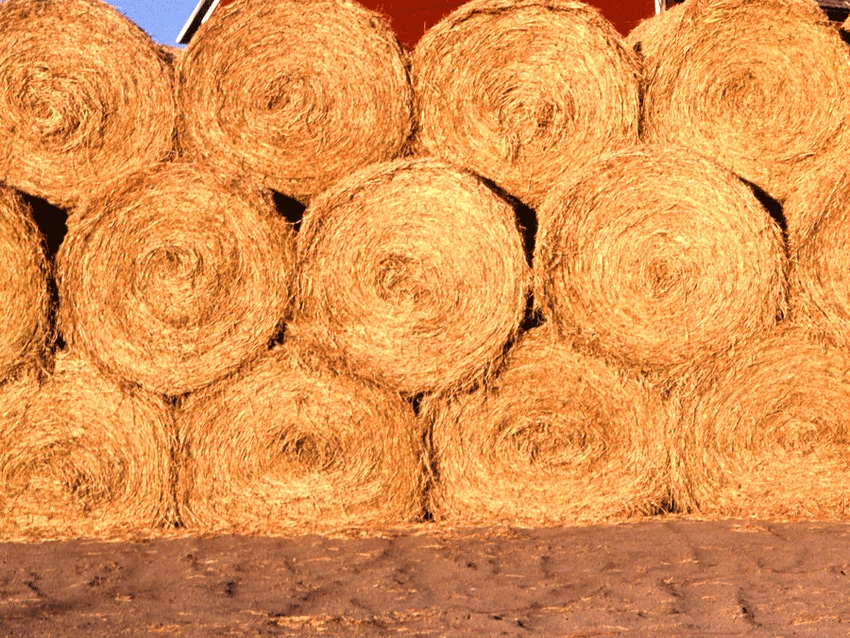
Drought opens door to new invasive weed varieties
Buying out-of-state hay could set state up for an invasive weed nightmare in years to come.Catching invasive weeds early is the only real way to prevent them from taking hold.Many seeds of invasive weed varieties can lay dormant in the soil for a number of years.

Cattle raisers buying out-of-state hay could be setting themselves up for an invasive weed nightmare in years to come, an unexpected complication caused by the devastating drought across Texas. So warns Dr. Barron Rector, associate professor and Extension range specialist for Texas AgriLife Extension Service.
“Interstate highways across Texas are full of trucks bringing in out-of-state hay in response to the drought, but along with the hay comes the risk of spreading types of invasive weeds not common in Texas, and there is a real danger that many of these non-native weed varieties could start cropping up in the pasture next year or even in years to come if landowners are unaware of the danger,” Rector says.
It wouldn’t be the first time drought has caused a weed problem in Texas.
“In the drought of the early 1990s tropical soda apples weed was introduced in the Jasper area when a cattlemen transported hay in from Louisiana. Eight years later we realized we had a serious problem on our hands. As far back as the 1960s, during another drought, we believe woolly distaff thistle from California was introduced to Texas. This weed came from Italy to California and then to Texas, so there is a real risk that these hay bales coming into the state could be carrying seeds of invasive weed varieties we have never seen before,” he explained.
To complicate the risks, the extreme and continuing drought plaguing Texas is forcing some cattlemen to buy hay from Canada, and Rector says hay from as far away as South America may be making its way into the state.
“Interstate commerce of hay is not regulated for the most part, so there is no one at the state line to inspect the hay for foreign and invasive plants. The burden rests on the shoulders of property owners who are buying this hay to be on guard against invasive weeds that may crop up next spring or sometime in the future when the rains come,” he said.
Rector says 1,400 invasive species have been documented in the U.S., infecting an estimated 1 million acres, and that number could grow by as much as 20 percent each year, resulting in the potential for an estimated $100 million in damage annually.
Other potential invasive species coming from out-of-state sources include leafy spurge from Nebraska, Kansas, Wyoming, Utah, Idaho and Montana, along with Canada thistle, spotted knapweed, blessed milk thistle, Russian knapweed and yellow star thistle.
“Property owners buying hay from out-of-state should be familiar with the types of weeds that can come from the areas where the hay originated, and they need to take steps now to prevent a more serious problem down the road,” Rector says.
Limiting the area where out-of-state hay is fed and stored is the first step to minimizing the problem. Rector says to refrain from spreading the hay over multiple pastures and large areas and, as possible, confining it to “feeding areas” where weed control could easily be applied. And just as important is recognizing new weed varieties when they emerge in the spring.
Early detection
“Catching invasive weeds early is the only real way to prevent them from taking hold and causing damage. Identifying these new types of weeds before they flower gives us the chance to control and manage them through chemical treatment, and for that reason you need to be aware of the types of weeds that soon may be cropping up in your pastures,” Rector explained.
That means becoming familiar with what these emerging weeds look like and taking quick action. Resources to help identify invasive weeds include:
But research of new invasive species shouldn’t stop there. Rector advises property owners to identify the types of weeds that might be transported with hay shipments. That might involve checking with state agencies that control weeds in those states where the hay originated.
Complicating the risks of invasive weeds is the current drought. Rector says with the drought expected to continue into spring, summer and possibly next fall, the seeds of invasive weeds transported with hay may not germinate for several years. Many seeds of invasive weed varieties can lay dormant in the soil for a number of years.
“Until the rains come and the weeds emerge, we may not even be aware we have a problem, so awareness and diligence are the keys to controlling unwanted outbreaks,” he said.
About the Author(s)
You May Also Like





